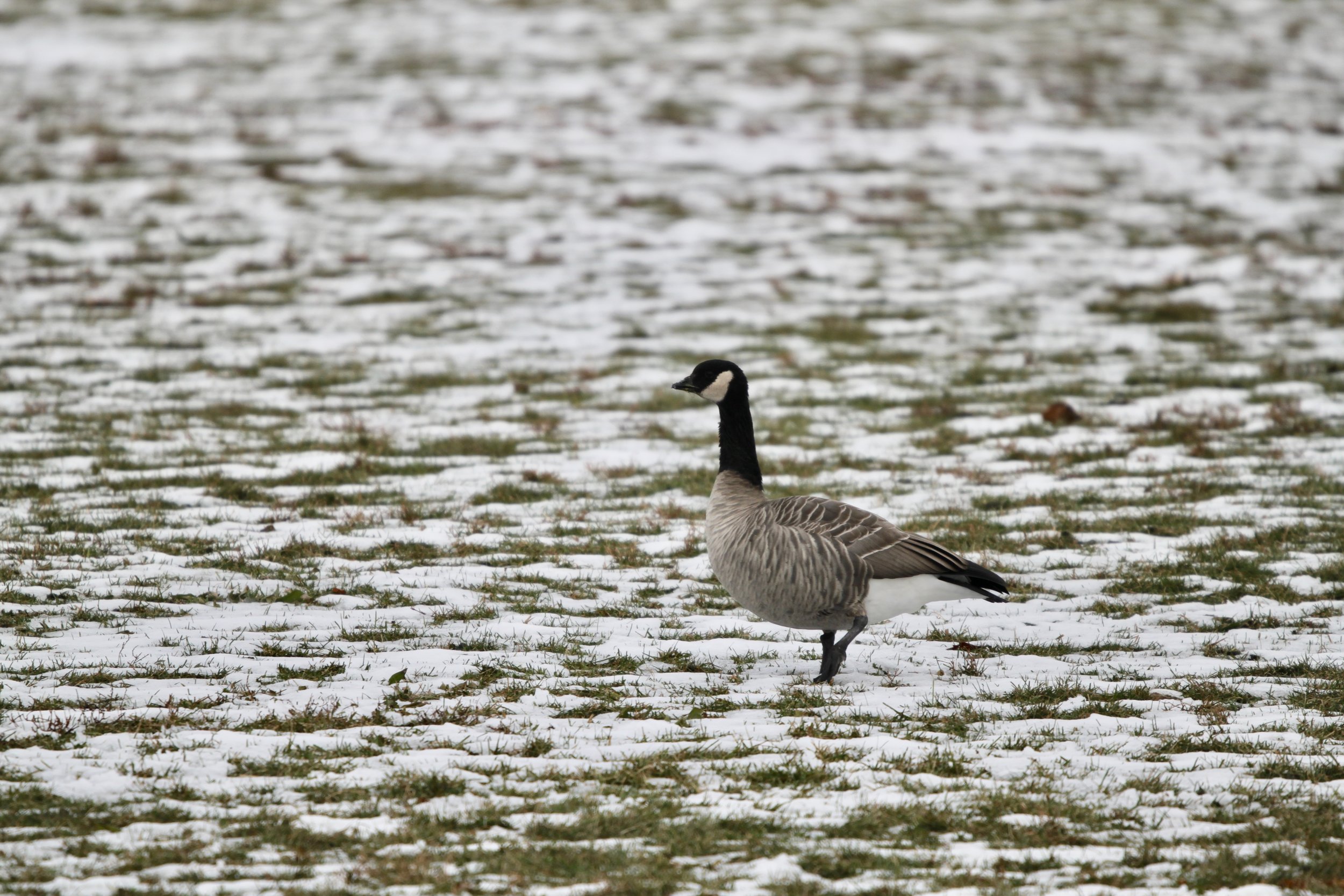Identifying a Cackling Goose is Far from a Trivial Pursuit
Photo credit: Bob Dolgan
By Bob Dolgan
Birding offers many things, but the joy of discovery is one of its foremost delights. That’s what brought me to Calumet Park in southeast Chicago in November to look for a Cackling Goose, a relatively new species that was once lumped with the Canada Goose. I needed a cackler for my 2018 year list and it seemed a lock since a few birds had been reported online.
But here’s the thing. As much as eBird and social media have transformed birding, it’s still challenging to pull up to a hotspot and expect to find the bird. Calumet Park, for example, is made up of 199 acres and there were bound to be many nearly identical Canada Geese present.
When I arrived, I saw a few small flocks of geese on Lake Michigan, maybe totaling 100 or so. I pored over them, identifying what I thought to be lesser (smaller form) Canada Geese, but no cacklers (that I could tell anyway). Then I rounded a corner and stumbled on a ballfield filled with about 300 Canadas. At this point, I had to laugh: I was searching for a needle in the proverbial haystack. With daylight limited and other sites to hit, I didn’t have time for the task. So I checked out a few other waterfowl on Lake Michigan before heading to another location.
Rather than accepting defeat, I decided to get some advice from other birders. I reached out to Matthew Cvetas and Walter Marcisz, veteran birders who had been at Cal Park and seen Cackling Geese. Their responses were both interesting and helpful. I knew about the stubby bill, steep foreheads and overall small size of the cacklers. Matthew’s advice was to scan through each Canada and look for these features. Patience, if anything, was the key and becoming familiar with the field marks of the regularly occurring Canadas. Walter had similar advice but added that the cacklers are a bit more like the East Coast species, Barnacle Goose and Brant, in look and feel. Bingo. I had some familiarity with those species and felt this was a breakthrough.
In relating this story to a non-birding friend, he noted the name of the Cackling Goose – did it have a distinctive cackling call he asked? I balked a little and said it would be hard to pick out the cacklers’ higher-pitched honk amid all the Canadas. Further, they may not call at all. I honestly didn’t think much of the suggestion.
A few days later cacklers were still being reported at Cal Park so I went back out. This time I encountered about 400 geese and started scanning through them one by one. By now I was getting good at identifying the lesser Canada Geese, which are sort of in between the larger resident Canada Geese and Cackling Geese in size. But I was pretty sure I still hadn’t seen a cackler. I stood on a snowy baseball diamond and looked up a cackler video on my phone and compared it to the birds around me. The nearby geese were considerably larger with a slightly different posture than the bird in the video. As I was doing this, a lone high-pitched honk pierced some momentary quiet and seemingly hung in the wintry air for a moment. I turned around and saw a small Brant-like goose about 20 yards from me. It had a steep forehead and a very short bill. Its breast was more uniformly gray than the whiter-breasted Canadas around me. Undoubtedly, this was a Cackling Goose.
I delighted in the discovery, feeling a moment of clarity that is hard to replicate outside of birding. With this experience under my belt, mundane visits to Chicago parks in winter would now be much more interesting. It was a reminder that you never know what you might find in nature. Just look carefully. And be sure to listen.
Tips for identifying a Cackling Goose
Study resident Canada Geese and, in winter, the lesser Canada Geese that migrate from the north. The resident birds are bigger, longer-necked with more gently sloping foreheads and large bills. The lesser Canadas have shorter necks and steeper foreheads. Cackling Geese are the smallest geese with the steepest foreheads and shortest bills.
Note Cackling Goose itself has four races. The one I observed and most prevalent in our area is Branta hutchinsii hutchinsii. Cackling Geese breed in the Arctic and largely winter in the Great Plains.
The various races of Canada Goose and Cackling Goose tend to stick together when in a flock. Narrowing the flock to subsets of birds can simplify identification.
One of these birds is not like the others. Finding a Cackling Goose amid hundreds of Canada Geese poses a challenge.
A Cackling Goose present in Calumet Park in Chicago in November 2018.


